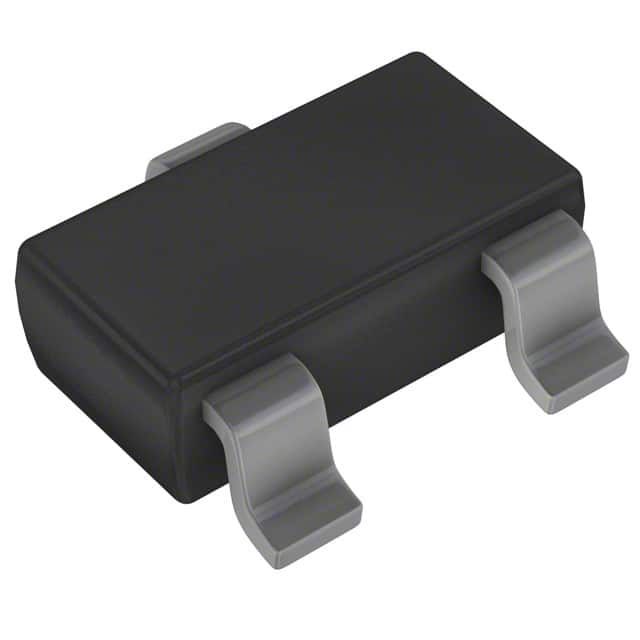Consulte las especificaciones para obtener detalles del producto.

SST2222AT116
Product Overview
- Category: Transistor
- Use: Amplification and switching in electronic circuits
- Characteristics: Small signal NPN transistor, low power, high voltage, high current capability
- Package: SOT-23
- Essence: Small size, high performance
- Packaging/Quantity: Tape and reel, 3000 units per reel
Specifications
- Type: NPN
- Maximum Power Dissipation: 225 mW
- Maximum Collector Current: 600 mA
- Maximum Collector-Base Voltage: 75 V
- Maximum Collector-Emitter Voltage: 40 V
- Maximum Emitter-Base Voltage: 6 V
- Transition Frequency: 250 MHz
Detailed Pin Configuration
- Collector (C)
- Base (B)
- Emitter (E)
Functional Features
- High current gain
- Low noise
- Fast switching speed
Advantages
- Small package size
- High current capability
- Wide range of applications
Disadvantages
- Limited power dissipation
- Moderate transition frequency
Working Principles
The SST2222AT116 operates as a semiconductor device, utilizing the movement of charge carriers to control the flow of current. When a small current is applied to the base terminal, it controls a larger current flowing between the collector and emitter terminals.
Detailed Application Field Plans
- Audio amplification
- Signal processing circuits
- Switching circuits
Detailed and Complete Alternative Models
- BC547
- 2N2222
- 2N3904
This comprehensive entry provides an in-depth understanding of the SST2222AT116 transistor, covering its basic information, specifications, features, advantages, disadvantages, working principles, application field plans, and alternative models.
Enumere 10 preguntas y respuestas comunes relacionadas con la aplicación de SST2222AT116 en soluciones técnicas
What is SST2222AT116?
- SST2222AT116 is a general-purpose NPN transistor commonly used in electronic circuits for amplification and switching applications.
What are the typical applications of SST2222AT116?
- SST2222AT116 can be used in various technical solutions such as signal amplification, voltage regulation, motor control, and audio amplification.
What are the key electrical characteristics of SST2222AT116?
- The key electrical characteristics include a maximum collector current of 600mA, a maximum collector-emitter voltage of 40V, and a DC current gain (hfe) of 100-300.
How do I determine the pin configuration of SST2222AT116?
- The pin configuration of SST2222AT116 is typically available in its datasheet, which shows the base, emitter, and collector pins.
What are the recommended operating conditions for SST2222AT116?
- The recommended operating conditions include a maximum power dissipation, operating temperature range, and maximum voltage ratings as specified in the datasheet.
Can SST2222AT116 be used for low-power switching applications?
- Yes, SST2222AT116 is suitable for low-power switching applications due to its moderate current and voltage ratings.
Are there any common alternatives to SST2222AT116?
- Common alternatives to SST2222AT116 include 2N2222, PN2222, and BC547 transistors, which have similar characteristics and can be used in similar applications.
What are the considerations for driving SST2222AT116 in a circuit?
- When driving SST2222AT116, it's important to consider the base current, voltage drop across the transistor, and the load connected to the collector.
Can SST2222AT116 be used in high-frequency applications?
- While SST2222AT116 has limitations in high-frequency performance, it can still be used in moderate frequency applications such as audio amplification and signal processing.
Where can I find detailed information about using SST2222AT116 in technical solutions?
- Detailed information about using SST2222AT116 can be found in its datasheet, application notes from the manufacturer, and technical forums discussing its practical use in various circuits.

